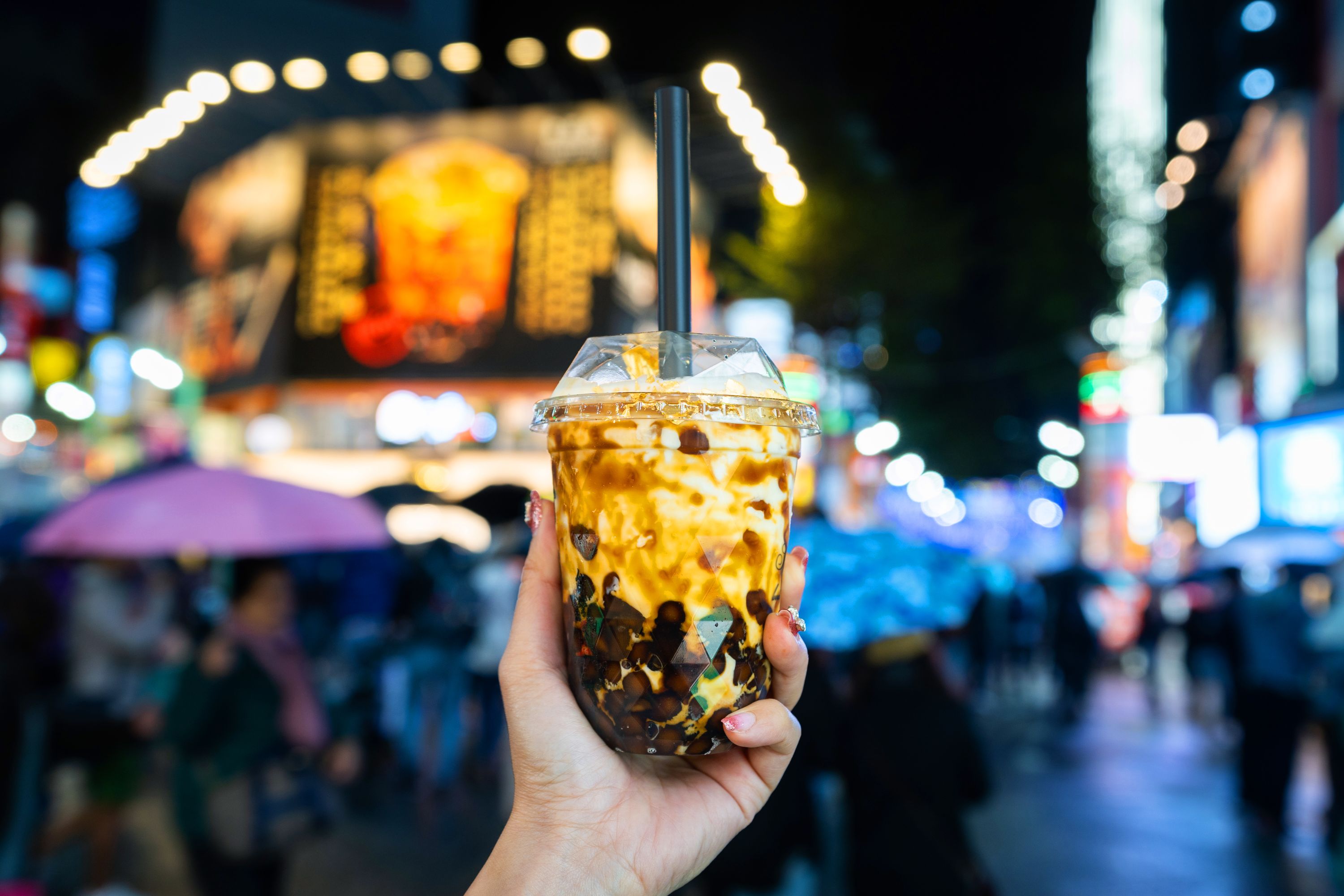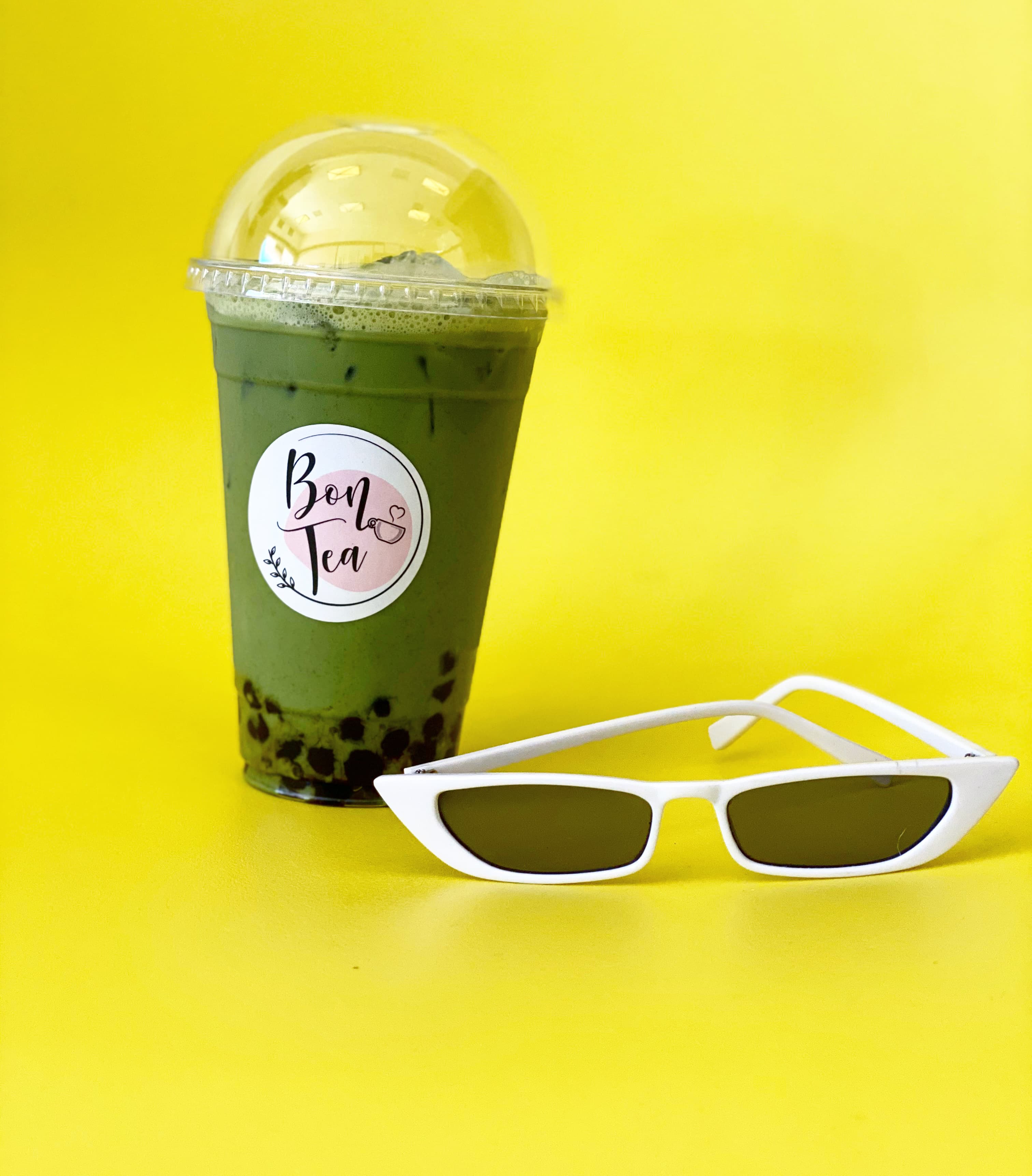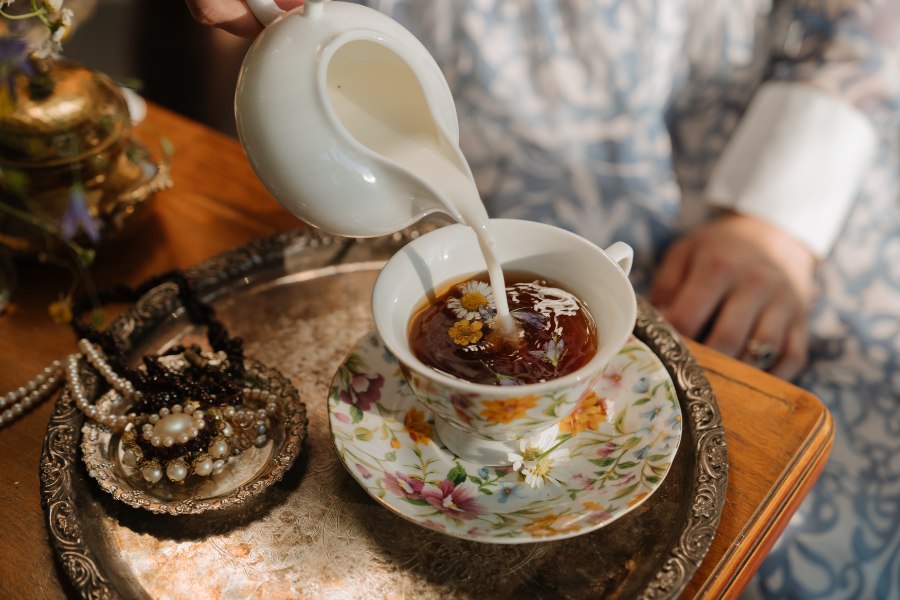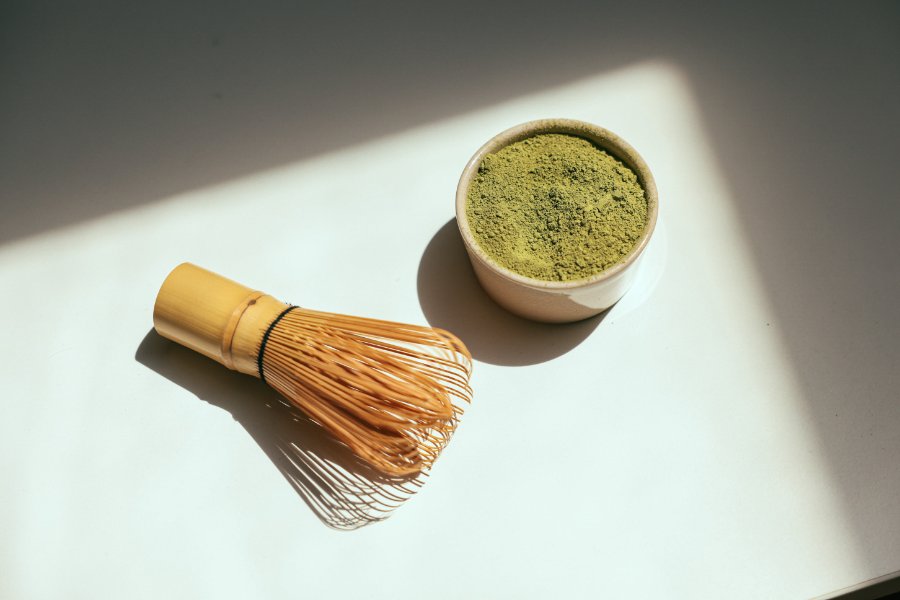
21 July, 2021 | Bon Tea Cafe Updated 2021
What is Bubble Tea and How To Make One?
Boba or bubble tea looks like a beverage made for social media platforms, particularly Instagram. With all its pastel colors and various colorful pearls at the bottom, boba tea can look decorative, beautiful, and even become trendy.
If you don't know what we mean, check out @bontea_melrose on Instagram.
Boba tea has been a delicious treat for many people for decades. So whether you're already a boba fan or have been hoping to give it a try, here's everything you need to know about bubble tea.
Bubble Tea, A Global Addiction?
According to a recent study, the boba industry is estimated to grow from nearly $2 billion to $4.3 billion by 2027. And did you know that in 2018 alone, there was a 3,000% increase just from boba tea orders?
Meanwhile, the drink had been showing up on menus in other countries for some time now. For example, Germany included boba tea on its McDonald's menu in 2012.
But how much love do people have for the drink?
Let's see: In 2020, during the pandemic, boba tea shops in Singapore closed temporarily to prevent the COVID-19 from spreading. Boba lovers raced to various outlets to get their last delicious fix and say a temporary goodbye to their favorite drink.
And just recently, there has been a boba tea shortage in the United States, and it could take months for supplies to get back to normal! But, there's no doubt that boba tea has a special place in many people's hearts.
But what is bubble tea? Let's find out.
What is Bubble Tea?
Boba tea is a famous Taiwanese drink invented in the 1980s. You can find numerous different variations of the beverage. However, it's a combination of tea, bubbles, and milk at its core, shaken like a martini.
Then you drink it with a famously big straw to accommodate the bubbles at the bottom of the drink. The "bubbles" are typically small balls made of anything from tapioca to fruit jelly.
This beverage was traditionally treated as a sort of a dessert drink that teenagers loved. And that was because of the chewing experience, and of course, its sweetness. But now, boba tea has taken on different forms such as smoothies, coffee drinks, fruit teas, and even cocktails.
The Origins Of Bubble Tea

So when did it all begin?
Well, there's no documented evidence about the boba tea invention, but just like other teas, there's a story behind it. And there's even a debate about the origin of boba tea as two companies, Han Lin Tea Room and Chun Shui Tang, claim to invent it.
Regardless, most agree that it became popular in the 1980s. However, the roots of boba tea can be traced back to the 1940s. In 1949, Chang Fan Shu, a mixologist in an izakaya in Taiwan during WWII under Japanese rule, established a tea shop.
Chang Fan Shu sold special show yao tea (hand-shaken tea) made with cocktail shakers. What was created was a silky and rich iced tea with fine air bubbles floating on top. This tea became known as foam tea in Taiwan.
Today, shou yao is a critical boba tea element. Bubble tea is incomplete without shou yao. This invention was revolutionary at the time, and that's because cold drinks were not a thing back then. And the idea of drinking beverages and food for pleasure had only started to grow in post-war Taiwan.
The passion for delicious cold drinks intensified as the years went by. The tea beverages trend grew as the leisure food trend rose in the 1980s during Taiwanese rapid economic growth.
Aside from that, more tea shops and tea restaurants opened on the streets and the suburbs.
The Fight For Bubble Tea Supremacy Begins
Fast forward to 1986, a Taiwanese entrepreneur and artist Tu Tsong decided to start a new business venture by going along with the tea shops that were popping up.
Tu had lost his previous hot pot restaurant and was in about $133,000 debt. He desperately needed an idea to set up his tea shop that was different from the masses. As he was visiting the Yamuliao wet market, he saw fen yuan (tapioca pearls), a traditional snack he loved from childhood.
He then came up with an idea to add the fen yuan to his green tea. He eventually experimented with it and came up with the boba tea we know today, or so it seems.
As said earlier, Tu is not the only one who claimed to have invented boba tea. The product manager at Chun Shui Tang, Lin Hslu Hui, says she created the first glass of boba milk tea at a staff meeting in 1988 just for fun.
And that was the beginning of 10-year litigation. The fight was finally settled in 2019 when the court decided that boba tea milk was a drink any shop and anyone can make. So it's not necessary to debate about it.
Indeed, it was disappointing but a friendly ending.
What Ingredients Can You Find In Bubble Tea?
Boba milk tea can have numerous ingredients, and its flavors are ever-increasing as more people become creative. But a typical boba tea will include the following:
- Brewed tea
- Tapioca pearls, also known as boba
- Milk or creamer such as condensed milk, almond milk, soy milk, etc.
This is all you need to make your boba tea, and it's not difficult to do either. (We'll show you the simplest way to make boba tea shortly.) However, things start getting interesting when you taste all the different boba tea flavors.
Types of Tea in Boba Tea
The base flavors come from the brewed tea you use, like green tea or black tea. And because of that, you can explore other alternatives, just like your favorite coffee drinks. There are endless ways to get different boba flavors.
Most boba teas are brewed with green tea, oolong tea, or black tea.
- Black tea (also called red tea in Taiwan, China, and Hong Kong). So far, it's the most popular alternative for making boba tea.
- Green tea. A good example is jasmine tea, including green tea powders such as matcha.
- Oolong tea. Regular oolong tea is a popular option. However, green oolong is another favorite option that many boba tea lovers love.
- White tea. White tea is popular in some Western countries but is rarely used for boba tea in Taiwan.
Some of the most popular boba flavors include:
- Black milk tea
- Thai milk tea
- Matcha milk tea
- Taro bubble tea
Of course, all these milk teas include boba pearls. If you've never tried any of these beverages before, try out these flavors first. They are not overwhelming but subtle enough so that you can make an excellent first impression of the incredible dessert drink.
Now bubble tea has grown immensely in popularity that there are new versions of boba that don't include tea at all. And they're becoming popular as well. Some of the new variations are:
- Fruit boba tea
- Snow ice. A kind of powdered coffee-based drink that's frozen and blended.
- Cream-based drinks
Types Of Milk In Boba Tea
Most boba tea shops add milk, including milk-like ingredients, to their boba drinks to give it a creamy texture and flavor. You can use different flavors, dairy styles, and dairy-like ingredients to make your boba milk tea. Here are some types of milk you can use:
- Non-dairy creamer. (It's the most popular one used by far)
- Sweetened condensed milk
- Fresh milk
- Coconut milk
- Lactose-free milk
- Soy milk. It can be either pre-made or freshly made.
- Calpis and other yogurt-like beverages
Some of the tart fruit-flavored boba teas are only available without milk. And that's because the fruit syrup acidity can clot the milk.
Tapioca Pearls, What Are They?
Boba or tapioca pearls are NOT tires and old shoes. We can tell you that for sure.
These bubble-like pearls are little tapioca balls, and the tapioca is a starch extracted from cassava root. It's naturally gluten-free and usually made into edible pearls and flour, says the Huffington Post.
The raw tapioca pearls are black, but they can be white or transparent as well. When you boil, the boba pearls become soft. It's then held in a syrup mixture to become sweet and remain chewy.
These tapioca pearls are what you usually see at the bottom of the cup. And they get filled with various chilled beverages like milk-based teas, fruity teas, etc. You then shake the drink to mix the ingredients and enjoy.
What Does Tapioca Pearls Taste Like?
The cooked tapioca pearls, aside from being chewy, are pretty flavorless. They only become sweeter when you soak them in your favorite syrup. In other words, the pearls add texture to the drink.
However, boba tea doesn't always have tapioca pearls. Shocking! You can also include other ingredients like pudding (yep, you heard right), grass jelly, sago, and even aloe vera. But if you're searching for a classic "memorable" drink experience, you should begin with the tapioca balls.
What Is Popping Boba?
Popping or bursting boba is a mini type of boba pearls that contains fruit juice and bursts when you chew them. It's made through molecular gastronomy. Popping boba is made from primarily seaweed extract and flavorings.
The seaweed extract is typically the outer shell of the popping bubbles that encloses the sweetness inside. You can use the popping boba in boba tea, including snow ice, frozen yogurt, and other frozen treats.
Flavors of Boba Tea

Even though the tea, milk, and boba form the base of the boba tea, the true flavor comes from the flavoring ingredient like the powder or syrup.
As you probably know, coffee shops have numerous lineups of flavor lattes to syrup bottles. In the same way, boba shops have an immense variety of powders and syrups. Simple flavored syrups are the most popularly used because they blend easily into cold tea.
Some of the most popular fruit tea boba drinks include:
- Honeydew,
- Lychee,
- Peach,
- Passion fruit,
- Strawberry
- Mango.
- Plum
How To Make Bubble Tea
Now that you know everything about boba tea let's find out how to make one.
Ingredients
- Three tablespoons of loose-leaf black tea (or eight bags of black tea)
- Whole milk (or your preferred milk)
- ¾ of cup tapioca pearls
- 4 of cups hot water
- Simple syrup (your preferred sweetener)
For the simple syrup
- ½ cup sugar
- ½ water
Instructions
- Brew the tea. Steep the leaves or tea bags with 4 cups of water, freshly boiled. Let the tea stay in the water until it cools down.
- Prepare the syrup. Add the sugar and the water to the saucepan and stir everything together quickly. Put the water on medium-high heat. Cook until the water boils and dissolves the sugar completely. Remove the saucepan and let the syrup cool down before you transfer it to a bowl or jar.
- Prepare the tapioca pearls. Boil 4 cups of water and add your tapioca pearls, and stir the pearls and allow them to float on top. When that happens, you cook the pearls for another 5 minutes. You can taste a tapioca pearl if it has reached your softness level. You can cook for an extra few minutes if it's still hard. Remove the pearls and rinse the pearls with water, and put them in a bowl. Mix the syrup with the simple syrup to your taste.
- Add everything together, and strain the tea into a pitcher. Separate the cooked boba pearls into four big glasses. Then add a few ice cubes to each cup, and pour 1 cup of tea into each glass. Next, pour one and ½ tablespoons of syrup and milk into each glass. You can add more to your taste and stir afterward.
Conclusion
With everything provided in this guide, you can now make your bubble tea in different variations. You can get all the ingredients at your local shop so you can experiment with different varieties as much as you want. However, if you want us to deliver the delicious boba tea, place your order online now, and we'll gladly bring it. If you have too many activities on your hands, ordering online is the best route to take. So place your order online now!





